This week continues the customer profile series with an implementation from the University of Oklahoma Libraries.
This profile was created in conjunction with Carl Grant, Associate Dean/Chief Technology Officer of the University of Oklahoma Libraries.
Q: When are you planning to implement?
A: As one of the original development partners, we are fully implemented, up and running.
Q: What is the major benefit you hope to see as a result of your institutions use of Leganto?
A: Anything we can do to imbed the Libraries in the places where our users (faculty/professional staff/students) will get my attention. I’m always hoping we can embed our library’s vast resources in the workflows of those users and consequently, being embedded in courses management systems and library discovery tool was an instant win with me. Plus, I was so very pleased that this new product was allowing us to link in resources, not just books and journals, but also images, videos, websites, professor notes, data sets, GIS data, etc, all of which underscores our message that Libraries are about far more than just things that are read. It’s about information and making accessible all the ways knowledge is expressed, in all possible forms. (This is also why I wail loudly about the product name tying us back to “reading”!).
Q: What do you see as the major challenge you’ll encounter in getting your community of users to utilize Leganto?
A: Our campus switched to Canvas right in the middle of our Leganto implementation. So we started out with D2L and then had to switch. That was a huge setback and we still haven’t fully recovered from that occurrence. Most of our faculty are still converting courses and reloading them from D2L to Canvas and as you might guess, they’re not interested in something else new to learn during that time frame. However, we’re starting to get some adopters out of those that converted to Canvas early on and we believe by the end of this calendar year, we’ll have a respectable number of active users.
Q: How will you measure success?
A: We’re always looking to not just perform counts of activity, but to measure actual impact of our activities. So, we’d like to be able to determine if users that engage with Leganto get better course grades than those who do not? Does this class of users end up having a higher matriculation rate? Of course we also want to see comparisons by the various colleges of how many of their faculty are using Leganto and how does that compare to other faculty at other universities? So, comparative and impact metrics are what we’re looking to obtain.
Q: How can the user group best be of help to you?
A: Coordinating our voices, helping us understand how to focus our needs to match areas of development being undertaken by Ex Libris so that when they have that particular code open, they optimize the time by making needed enhancements and finally helping us smooth our methodology for delivering input to Ex Libris in a way that seeks an optimal return on the time we spend in doing this work. It’s a lot of effort and we need to ensure that the payoff makes it worthwhile!
Q: How do you see Leganto contributing to the positioning of your library within your University?
A: We position our Libraries as the “Intellectual Crossroads of the University”, thus we see this tool as an excellent tool to fuel interdisciplinary pedagogy and research. As I mentioned before, we understand that to make adoption of the product by our users as easy as possible is key so embedding it in existing workflows to the maximum extent possible and defaulting needed inputs wherever possible – these are all important to increasing the adoption rate.
Carl Grant
Associate Dean, Knowledge Services & Chief Technology Officer
Note : The previous stories from the series can be found here.
